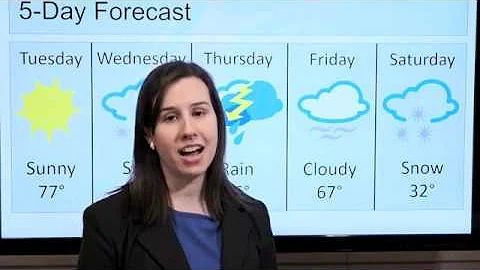July 1-3, this year's No. 3 typhoon Siam is about to form. On the morning of June 29, the Meteorological Agency pointed out that its central wind force has reached level 7 and may develop into this year's No. 3 typhoon Siam within 24 hours. . The future Typhoon No. 3 Siamba will slowly move northwest and gradually approach the coast of South China. Around July 2, it developed to a severe tropical storm level 10 and came to the ocean east of Hainan, and the current forecast has the possibility of landing in my country. The path of is complicated and slow, and may affect our country for a long time.
Before the typhoon comes, animals have foresight.
Camels, squirrels, bees, leopards, etc. all store food in advance. Spiders are closing their webs. Small animals are restless near their nests, busy carrying food from one trip to another, or scurrying around. Dragonflies fly low, full of vigilance, and their eyes are filled with fear.
Before a violent storm comes, the water vapor in the air will increase, and the ant nest will become humid, causing ants to be unable to live in peace and leave the nest. The ants will keep digging the soil, and then move the soil around the entrance of the hole. When they see ants swarming Coming out of the cave indicates that heavy rain is coming, and the heavier the rain, the higher they build their nests.
Yellow silk ants rarely build nests. They usually move before it rains. The higher they move, the heavier the rain will fall. Sometimes we will see ants climbing up the trees in groups, which also indicates that a storm is coming.
Snake Aisle means that the humidity in the air increases and the air pressure is low. The water vapor in the cave is not easy to diffuse and evaporate, so it is very stuffy. The snake will find it difficult to breathe, so it has to climb out of the hole to get some air. This is also a precursor to heavy rain.
Frogs cry loudly and intensively, which indicates that it will rain soon. Before the rain, the air pressure is low and there is a lot of water vapor. The frogs feel short of breath and scream. Before a thunderstorm comes, their calls will behave like this: they are not very loud, and their calls are intermittent, sometimes loud and sometimes soft, and the sound is hoarse.
Turtle As a cold-blooded animal, it can also predict violent storms relatively accurately. Before it rains, the water vapor in the air increases greatly, and many tiny water droplets condense on the tortoise shells that dissipate heat quickly. Therefore, if the turtle's back is wet, it will probably rain heavily in a while. Even the turtles raised at home can become restless.
Earthworms like to live in burrows in low-humidity and loose soil. If they come out of the ground and move, it means there is a lot of water vapor in the air and the air pressure is low, which is a sign of heavy rain.
The chipmunk lives in cold Siberia and can also predict the weather. If the chipmunk makes a shrill scream and scurries back and forth, it means that dark clouds will soon cover the sky and heavy rain is coming.
Sparrows are looking for food everywhere, flying non-stop, and when entering the nest, they are still holding weeds, seeds and other things in their mouths. This means that the sparrows are hoarding food, so they will usually be there in the next 3-5 days. It rains heavily.
Many water animals have the ability to predict the coming storm. For example, jellyfish has an ear-like organ on its body. When a storm comes, it can feel the infrasound waves and capture the information about the coming storm 10 to 15 hours before, and then it will release the gas in its canopy. Sink to the bottom of the sea and hide your body in a safe place.
The crocodile will also dive into the water. Although it is a land animal, when it dives, part of its oxygen will be distributed into the blood in the body, and its heart rate will change from 40 times per minute to 3 times per minute. Crocodiles have very large lungs, like oxygen bottles, and they can stay underwater for several hours, long enough to wait until the typhoon blows over.
Like squirrels and small monkeys, they usually hide in groups in tree holes or caves, otherwise they are easily blown away. They will find shelter on their own.






















